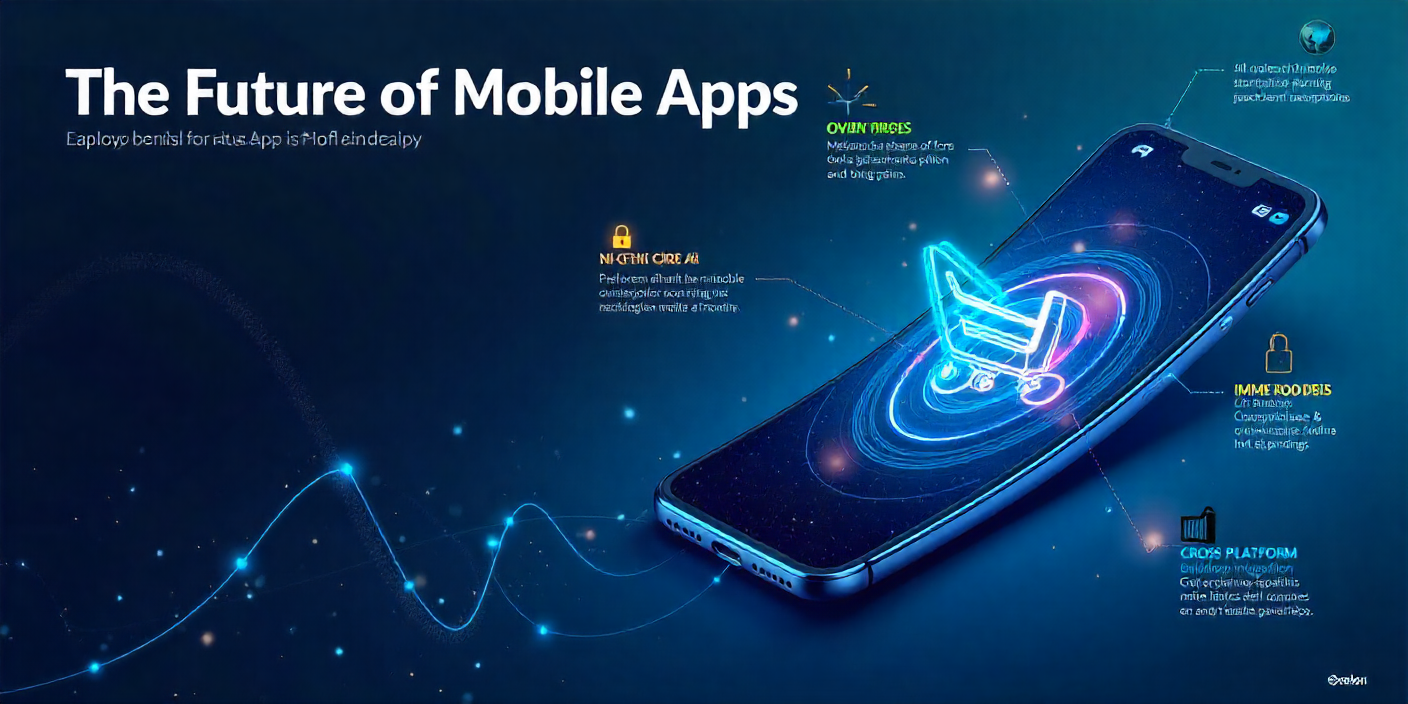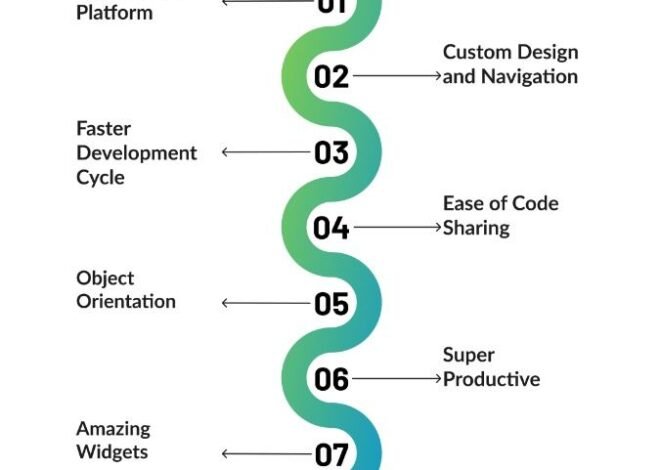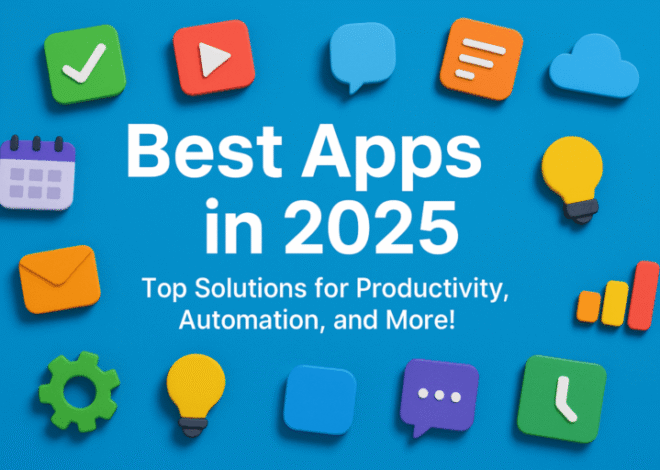
The Mobile App Revolution: Trends, Challenges, and Strategies for Success
Introduction
Mobile apps have become an integral part of our daily lives, transforming how we communicate, shop, learn, and entertain ourselves. With over 3.5 billion smartphone users globally, mobile applications have not only revolutionized the way we interact with the digital world but have also opened up vast opportunities for businesses to connect with customers. From gaming and social media apps to productivity tools and e-commerce platforms, mobile apps are driving innovation across industries and reshaping consumer behavior.
This article explores the world of mobile apps, including the latest trends, challenges developers face, and the strategies that can lead to success in the ever-evolving mobile app market.
The Rise of Mobile Apps: A Historical Perspective
The concept of mobile apps dates back to the early 2000s, but it wasn’t until the launch of Apple’s App Store in 2008 that mobile applications became mainstream. The App Store provided developers with a platform to reach millions of iPhone users, and soon after, Google launched the Android Market (now Google Play). These two ecosystems laid the foundation for the app-driven world we live in today.
In the years following the launch of app stores, mobile applications quickly evolved from simple utilities to complex, feature-rich platforms that serve a wide range of purposes. Today, mobile apps are essential tools for businesses to engage with customers, streamline operations, and improve user experiences.
Opportunities:
-
Global Reach: With millions of users worldwide, mobile apps have the potential to reach a global audience, allowing businesses to expand beyond geographical limits.
-
User Engagement: Mobile apps offer personalized, real-time experiences, making them an effective tool for increasing customer engagement and loyalty.
Challenges:
-
App Saturation: With millions of apps available, standing out in the crowded app market can be challenging for developers.
-
Platform Fragmentation: The differences between iOS and Android platforms can create challenges in terms of development, testing, and optimization.
Trends Shaping the Future of Mobile Apps
The mobile app landscape is continuously evolving, driven by advancements in technology and changing user needs. Some of the key trends shaping the future of mobile apps include:
-
Artificial Intelligence (AI) and Machine Learning (ML): AI and ML are increasingly being integrated into mobile apps to provide smarter, more personalized experiences. From predictive text to facial recognition and personalized content recommendations, AI is making apps more intuitive and efficient. AI-powered chatbots, for example, are revolutionizing customer support by offering instant, 24/7 assistance to users.
-
Augmented Reality (AR) and Virtual Reality (VR): AR and VR are gaining traction in mobile apps, especially in gaming, retail, and education. Apps like Pokémon Go and IKEA’s AR app allow users to interact with digital elements in the real world, enhancing the app experience and driving user engagement. As AR and VR technologies continue to improve, we can expect more immersive, interactive mobile apps.
-
5G Connectivity: The rollout of 5G networks is set to change the mobile app landscape by enabling faster data speeds and lower latency. This will open up new possibilities for real-time gaming, video streaming, and cloud-based applications. Mobile apps will become more responsive and seamless, enhancing the overall user experience.
-
App Security: With the increasing amount of personal data stored on mobile devices, app security is more important than ever. Mobile app developers are prioritizing security features like two-factor authentication, encryption, and secure data storage to protect user information from cyber threats.
Opportunities:
-
Innovative Experiences: Technologies like AI, AR, and VR offer exciting opportunities for developers to create innovative, engaging apps that push the boundaries of what’s possible.
-
Improved Performance: 5G connectivity will significantly improve app performance, making apps faster, more reliable, and more capable of handling complex tasks.
Challenges:
-
Cost of Development: Integrating advanced technologies like AI, AR, and VR into apps requires significant investment in development and resources.
-
Privacy and Security Concerns: As mobile apps collect more personal data, ensuring data privacy and security will remain a critical challenge.
The App Development Process: From Concept to Launch
Building a successful mobile app involves a series of stages, from ideation and design to development, testing, and deployment. Each phase requires careful planning and attention to detail to ensure the app meets user expectations and performs well across devices.
-
Idea and Conceptualization: The first step in the app development process is defining the app’s purpose and goals. What problem does the app solve? Who is the target audience? What features will the app have? These questions must be answered early in the process to ensure the app’s success.
-
Design and User Experience (UX): The design phase is crucial to the app’s success. A well-designed app is intuitive, easy to navigate, and visually appealing. UX design focuses on creating a seamless experience that allows users to achieve their goals with minimal effort. This phase also includes wireframing and prototyping to visualize the app’s structure and functionality.
-
Development: The development phase involves writing the code that brings the app to life. Developers choose the appropriate programming languages (such as Swift for iOS or Java for Android) and tools based on the app’s requirements. This stage often involves collaboration between front-end and back-end developers to ensure the app functions smoothly.
-
Testing: Once the app is developed, it undergoes rigorous testing to identify bugs, performance issues, and user experience flaws. Quality assurance (QA) testing is essential to ensure that the app is stable, reliable, and secure.
-
Launch and Post-Launch Support: After testing, the app is launched on the App Store or Google Play Store. Post-launch support includes monitoring app performance, addressing user feedback, and releasing updates to fix bugs or add new features.
Opportunities:
-
Effective Problem Solving: A clear understanding of the app’s goals during the ideation phase helps create an app that effectively solves real user problems.
-
User-Centered Design: Investing in good design and UX ensures that the app is user-friendly and meets customer expectations, which drives engagement.
Challenges:
-
Complexity of Development: The development phase can be time-consuming and requires technical expertise, particularly when building complex apps.
-
Post-Launch Challenges: After launching an app, businesses must focus on ongoing updates, bug fixes, and customer support to maintain user satisfaction.
Monetization Strategies for Mobile Apps
Monetizing a mobile app is one of the key challenges developers face. The goal is to create a sustainable revenue model that generates income while maintaining a positive user experience. There are several ways to monetize an app, each with its own advantages and challenges:
-
In-App Purchases: This model allows users to download the app for free but offers additional features, content, or functionality for a fee. In-app purchases are popular in gaming and entertainment apps, where users can buy virtual items or access premium features.
-
Subscription Model: Subscription-based apps offer users access to premium content or features for a recurring fee. This model is commonly used in services like streaming platforms, fitness apps, and educational apps.
-
Ad Revenue: Many apps rely on ads to generate revenue. Display ads, video ads, and native ads can be integrated into the app, earning money based on impressions or clicks. However, ads must be carefully placed to avoid disrupting the user experience.
-
Freemium Model: The freemium model offers a free version of the app with limited features, while users can pay for an upgraded version with enhanced functionality. This model is popular in productivity and business apps.
Opportunities:
-
Diverse Revenue Streams: Offering a mix of monetization strategies allows developers to maximize revenue while keeping the app accessible to a wide audience.
-
Subscription-Based Revenue: Subscription models provide predictable, recurring income, making it easier to manage cash flow.
Challenges:
-
User Retention: Keeping users engaged and willing to pay for in-app purchases or subscriptions can be difficult, especially if the app does not consistently provide value.
-
Balancing Monetization and User Experience: Overly aggressive monetization tactics, like excessive ads or paywalls, can alienate users and lead to higher churn rates.
The Future of Mobile Apps: What’s Next?
As mobile technology continues to evolve, the future of mobile apps holds exciting possibilities. Some key trends to watch include:
-
Artificial Intelligence and Automation: AI will continue to drive innovation in mobile apps, enabling smarter, more personalized experiences. Automated customer support, personalized recommendations, and predictive analytics will be commonplace in future apps.
-
Cross-Platform Development: Tools like Flutter and React Native allow developers to build apps that work seamlessly across multiple platforms (iOS, Android, web), reducing development time and costs.
-
Wearables and IoT Integration: Mobile apps will continue to integrate with wearable devices and the Internet of Things (IoT), allowing users to control smart devices, track health metrics, and interact with technology in new ways.
-
Blockchain Technology: Blockchain will revolutionize mobile apps by providing secure, decentralized solutions for payment processing, data storage, and authentication.
Opportunities:
-
Innovation and Differentiation: Emerging technologies offer new opportunities to create unique, innovative apps that stand out in the crowded marketplace.
-
Better User Experiences: With AI and automation, apps will become more intuitive, enhancing user satisfaction and engagement.
Challenges:
-
Adoption of New Technologies: As new technologies emerge, developers must stay ahead of the curve and adapt quickly, which requires continuous learning and investment in research.
-
Security and Privacy: As mobile apps handle more sensitive data, ensuring robust security and privacy measures will be critical for maintaining user trust.
Conclusion
Mobile apps have become a cornerstone of modern digital experiences, offering businesses a powerful platform to engage with consumers. From advanced technologies like AI and AR to emerging monetization models, the mobile app landscape is constantly evolving. To succeed, developers must stay informed about industry trends, focus on user experience, and build scalable, secure apps that meet customer needs. As the mobile app industry continues to grow, businesses that embrace innovation, invest in quality development, and prioritize user satisfaction will be best positioned for long-term success.


